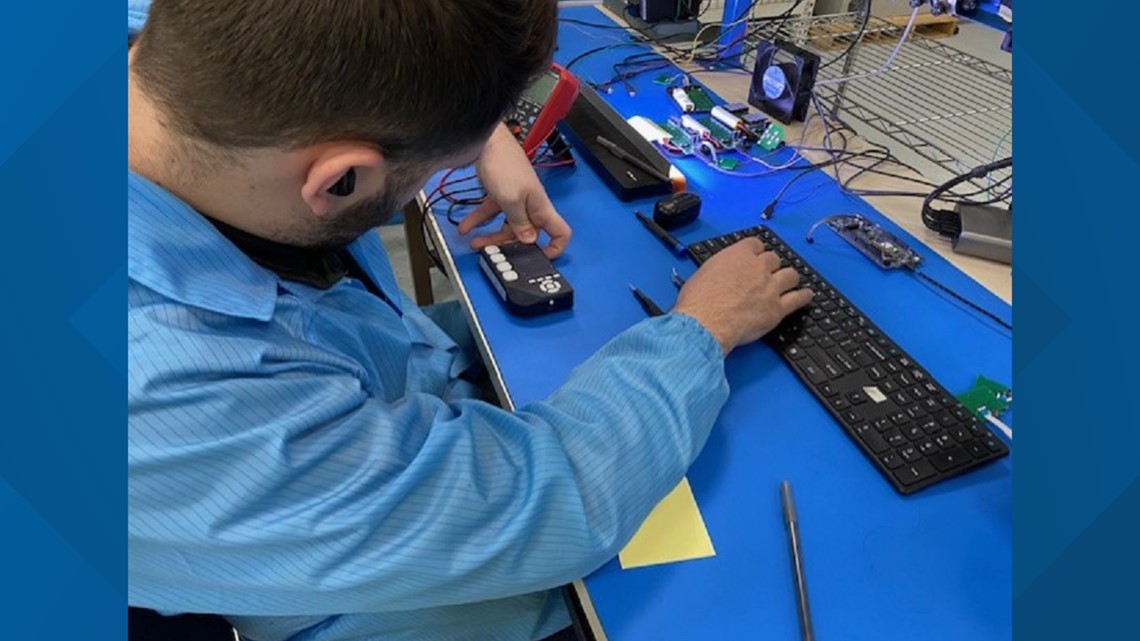INDIANAPOLIS — Inside an Indianapolis classroom, high school students are looking forward to their once-in-a-lifetime chance to take in next month’s total solar eclipse.
“It’s something I never thought I would be able to experience,” said Nina Pineda-Allen, a junior.
“I’ve always been interested in outer space and science,” senior Nestor Gonzales said. “But since I’m legally blind, I’ve never been able to fully experience it.”
Gonzalez and Pineda-Allen are students at the Indiana School for the Blind and Visually Impaired. They’ll be able to witness the eclipse by touching it with a device called a cadence braille tablet. The device is made up of 1,536 tiny dots that sync with a computer to create live-motion braille.
“I think that it's a breakthrough in technology,” sophomore Jazmine Nelson said. “To be able to feel that … is something that has never been done before, so I'm very excited to be one of the people who's going to experience it.”
The device is manufactured by Tactile Engineering in West Lafayette.
“In the blind community, they like to call it the 'holy braille,'” Tactile Engineering spokesperson Wunji Lau said. “It’s the idea of a full screen of dots you can use to make graphics. We took that a step further and made a device that is actually fast enough to show animation. You can track actual movement of objects.”


“When the moon goes over the sun, you can feel that moving across the screen,” Pineda-Allen said. “You can actually feel the moon moving across the screen (over the sun).”
Students will be able to experience the eclipse with the devices at the Indianapolis Motor Speedway, which has planned a day full of science-related programming. Tactile Engineering partnered with Indiana-based NearSpace Education and will also offer activities including a weather balloon launch and satellite experiments.
“We’re making this accessible to all individuals, not just the traditional people who always get it,” said Brandon Pearson, a NearSpace spokesperson. “It’s (about) showing them something they previously didn't think was available to them … and those are the things that are really rewarding.”
A potential ‘game-changer’
Pineda-Allen calls it a game-changer.
“I'm just hoping that eventually, these will become more commonplace with sighted people … getting to experience things that they get to experience on a regular basis," Pineda-Allen said.
Lau said that’s the goal.
“The goal of the tablet .. is to provide some sense of what we take for granted as sighted people … and provide that via the primary sense that blind people use, which is touch,” Lau said.
That includes watching a graph change in real time while gathering data, playing video games, experiencing a fireworks show by feeling the explosion as it spreads across the screen, or even taking in a ball game.


“You can track the movement of the ball and the players,” Lau said. “You can already listen to baseball on the radio. But now, you can follow the path of a pitch in your hand, feel where it’s going, feel what kind of pitch it is. The moment of the swing, you can know whether you're cheering or booing along with the rest of the crowd.”
Lau also said it will help level the playing field by giving blind and visually impaired students a way to complete e-learning projects along with their sighted peers, who already take home a school-issued laptop.
Students like Nelson, Gonzalez and Pineda-Allen say it’s a step in the right direction that even sighted people could benefit from.
“A blind person can feel everything in the world around them, but a sighted person just relies on their vision,” Nelson said. “This is not just about braille. It’s about tactile inclusion, and I think that’s really important.”

